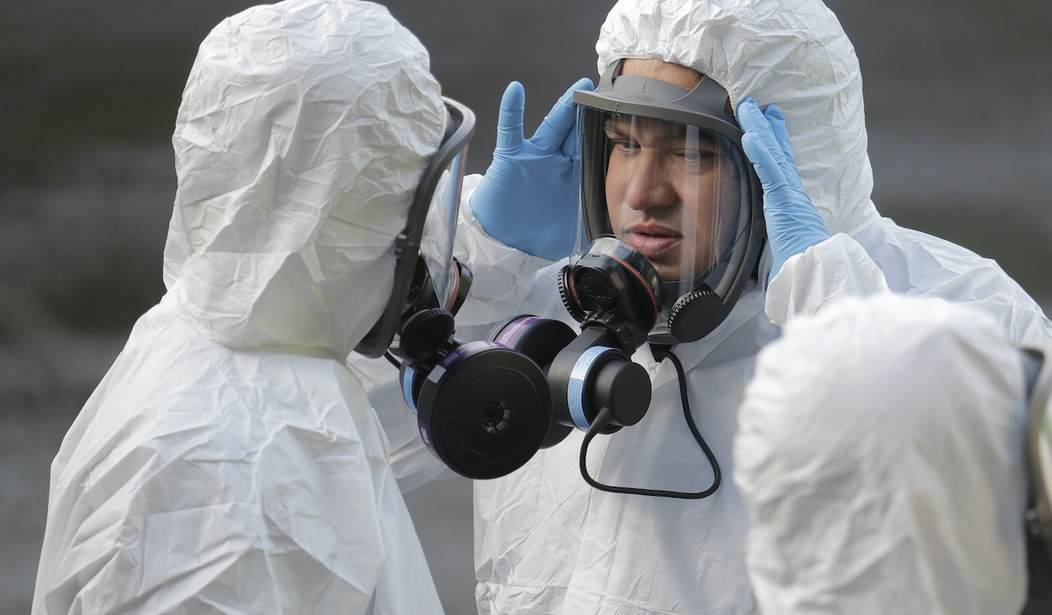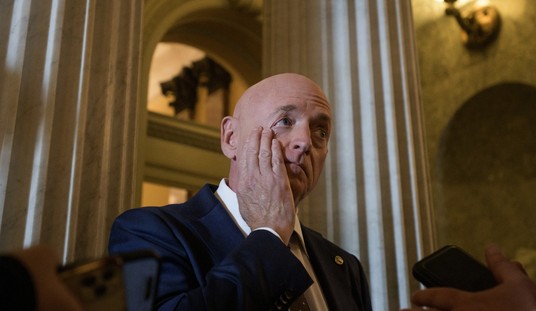The Wuhan coronavirus is serious. It’s deadly to the elderly and the immunocompromised. It’s spreading. It’s a pandemic. Italy is being ravaged by it. Europe is now the epicenter. Incoming travel from Europe by non-citizens has been shut down. Canada closed its borders. In Maryland, bars, restaurants, and movie theaters were shut down. The collar counties around Philadelphia enacted similar methods to contain the spread—and New Jersey has pretty much shut down as well. It’s only a matter of time before Virginia does the same. In Las Vegas, the casinos have ceased operations. The NHL season is over. The NBA season is over. The MLB season will be delayed indefinitely. Professional golf—the Masters Tournament—has been postponed. Professional tennis has been postponed. And the markets are crashing.
It’s not because so many have become infected. There are fewer than 200,000 cases worldwide, with less than 10,000 deaths thus far. The seasonal flu still infects and kills more people. Even adding Wuhan to this year’s deaths from the flu in the U.S., it’s still considered a moderate season. And we’re projected to lose 18,000-50,000 Americans from the flu this year. That being said, some things are getting blown way out of proportion. That isn’t to say this isn’t serious. Things can be serious but also overblown at the same time, especially when the latter emanates from an anti-Trump media complex that is desperate to weaponize anything to boot him from office.
You should still practice good hygiene, wash your hands, and practice social distancing. For the young, you’re ICBMs for this virus. If infected, you may get a little sick, but it’s hardly life-threatening by and large. You’re probably going to be asymptomatic. The problem is the incubation period is two-to-three weeks long, so after going out and possibly catching it, you could give it to your parents or grandparents, risk exposing them, and possibly killing them. It’s not that you will get sick, it’s that you risk infecting others. So, being shut in for a couple of weeks working from home is short-term pain-for lack of a better term—for long-term gain. Still, people in D.C. flocked to the bars. Not anymore, the mayor’s office locked them down last night. Or these folks pack the beaches in Florida. Every bad thing that’s said about Millennials is being brought into fruition with how we’re acting concerning this overhyped, though still serious, medical situation. I mean, most are Democrats, so there was already a deficit with regards to measuring a generation. I, frankly, cannot stand the leftist attitudes of my peers. Anyway, now that they’re committed to going out and about because they wish to spread this virus, let’s go to the worst-case scenario for this disease. How bad will the death count be in the U.S.? Remember, these are estimates that could be chipped away if public health measures are enacted, and people smarten up and stop doing stupid a** stuff, like boozing in crowded bars, restaurants, and rushing to the beaches. It’s 480,000 by some estimates. The New York Times crunched the numbers, and at a base level, they set the infection rate at 30 percent, with some 540,000 deaths resulting from that. Is this more than cancer? (via NYT):
Recommended
Deaths on that scale are not easy to grasp. To put the estimates in context, we’re comparing the possible toll with other leading causes of death in the United States in 2018, the most recent year with data available. We’ve started with an estimate from a University of Nebraska public health researcher, Dr. James Lawler, that was recently presented to hospital executives: 480,000 American deaths over the course of the illness known as Covid-19.
All of the estimates depend on two basic questions: How many Americans will be infected with the virus? And how many who are infected will end up dying? Our sliders allow you to consider a range of options.
As The New York Times reported last week, epidemiologists at the Centers for Disease Control and Prevention recently prepared four scenarios. Their calculations showed a large range of possible fatalities in the United States: between 200,000 and 1.7 million Americans over the course of Covid-19, assuming minimal efforts to contain it.
Few things kill anywhere near so many people in this country. These comparisons assume that the entire coronavirus pandemic runs its course in one year, though it could well take longer.
Dr. Lawler’s estimate, 480,000 deaths, is higher than the number who die in a year from dementia, emphysema, stroke or diabetes. There are only two causes of death that kill more Americans: cancer, which kills just under 600,000 in a year, and heart disease, which kills around 650,000.
A coronavirus death toll near the top of the C.D.C. range (1.7 million) would mean more deaths from the disease than the number of Americans typically killed by cancer and heart disease put together.
[…]
Many scientists and public health officials who have studied the data so far say they expect a fatality rate for Covid-19 of around 1 percent. But the documented fatality rate in most places is still higher. Places where a flood of sick patients have overwhelmed hospital capacity have had higher death rates than places where everyone who needs medical care can get it.
It’s possible fewer people will die here, either because conditions are substantially different in the United States, or because better treatments are developed, or because efforts to slow the spread help protect the people who are most vulnerable to severe disease.
By age group, it’s no shocker. This contagious disease is a real cause for concern for those 60 years of age or older. It’s an interactive graph. You can do other calculations if you wish.
In 2009, the Swine Flu infected 60 million Americans and killed at least 12,000. This year’s flu season is projected to infect some 32-49 million Americans. We’re not there yet, hence why I think there’s a serious overreaction that’s being fanned by the liberal media, but the markets have been dropping like a rock. The Dow dropped some 3,000 points yesterday, a 10 percent drop. We can’t keep this up. So, yes, keep washing your hands, stay home, work from home, and just lay low for a bit until we can get a hold of this thing because it is serious. For the elderly, you saw how one Washington nursing home got ravaged when it got inside. As long as our health care system is stable, doesn’t get overwhelmed, and doesn’t exhaust our ICU units and ventilators, of which we apparently don’t have nearly enough if this U.S. outbreak gets as bad as it could get—then we’ll be able to contain this virus. Right now, a large part is folks practicing some social distancing, and sadly, we needed government action to get this going.

























Join the conversation as a VIP Member